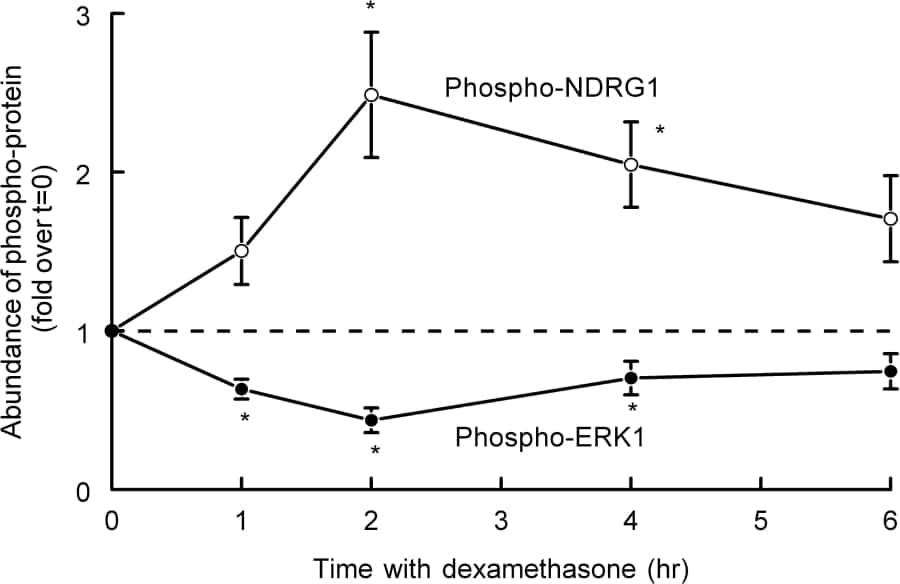The epithelial sodium channel (ENaC) is regulated by a number of hormones, including glucocorticoids, mineralcorticoids and insulin. The molecular basis of this control is not clear. We have shown that insulin increases Na+ conductance (GNa) and amiloride-sensitive short-circuit current in the Na+-absorbing H441 cell line derived from human distal airways (1). This regulation is dependent on the presence of dexamethasone, which increases the activity of SGK (1). In the absence of dexamethasone there is a basal level of SGK activity that is inhibited by the PI3 kinase blocker, LY294002, but, surprisingly, negligible GNa. We hypothesise that an inhibitory pathway may restrict GNa in the absence of dexamethasone, and that the glucocorticoid may, in addition to activating SGK, inactivate such a pathway. The signalling cascades involving ERK 1 and 2 inhibit ENaC at the transcritional level (2) and by facilitating their removal from the membrane by a Nedd-4-dependent mechanism (3). Thus the aim of this study was to investigate the effect of dexamethasone on ERK activity in H441 cells. Cells were grown on plastic in defined, hormone-free conditions (4). Protein was extracted after drug addition and aliquots were fractionated by SDS-polyacrylamide gel electrophoresis and blotted onto Hybond-P membranes. Western analysis was carried out using antibodies directed against phosphorylated and total ERK. Abundance was assessed using densitometry. Dexamethasone (0.2µM) significantly reduced levels of phospho ERK1 (fig) within 1hour and this inhibition was maintained for 4hr (ANOVA and Dunnets, p<0.05, n=9). ERK2 showed the same response pattern. SGK1 activity (assayed by quantifying NDRG1-Thr346/356/366 phosphorylation (5), fig) was increased over the same time period (ANOVA and Dunnets, p<0.05, n=15). LY294002 (50µM, 2hr) increased phospho-ERK1 (by 89±12%) and ERK2 (by 98±20%) levels (Student’s paired t-test, n=3). Total-ERK and total-SGK levels were unaffected in these experiments. Treatment of H441 cells grown on permeable supports into resistive monolayers with the ERK inhibitor, U0126 (0.5µM for 5hr), increased amiloride-sensitive GNa measured in an Ussing chamber (61.1±8.2 to 76.2±6.6µScm-2, p<0.05, n=4). These results suggest that ERK signalling inhibits amiloride-sensitive Na+ conductance in H441 cells and that this pathway is inhibited by dexamethasone. Dexamethasone thus increases GNa by at least two mechanisms; firstly by activating SGK, and secondly by suppressing the ERK pathway, which is normally inhibitory to GNa.
University of Cambridge (2008) Proc Physiol Soc 11, PC169
Poster Communications: Effect of dexamethasone on the serum-glucocorticoid-dependent kinase (SGK) and extracellular signal-regulated kinase (ERK) signalling cascades in H441 cells
S. K. Inglis1, E. Husband1, S. Wilson1
1. Maternal and Child Health Sciences, University of Dundee, Dundee, United Kingdom.
View other abstracts by:
Figure shows abundance of phospho-NDRG1 (n=17)and phospho-ERK1 (n=9) after exposure to dexamethasone for various time periods. Data are normalised to abundance at time zero. Data are mean plus or minus sem.
Where applicable, experiments conform with Society ethical requirements.

